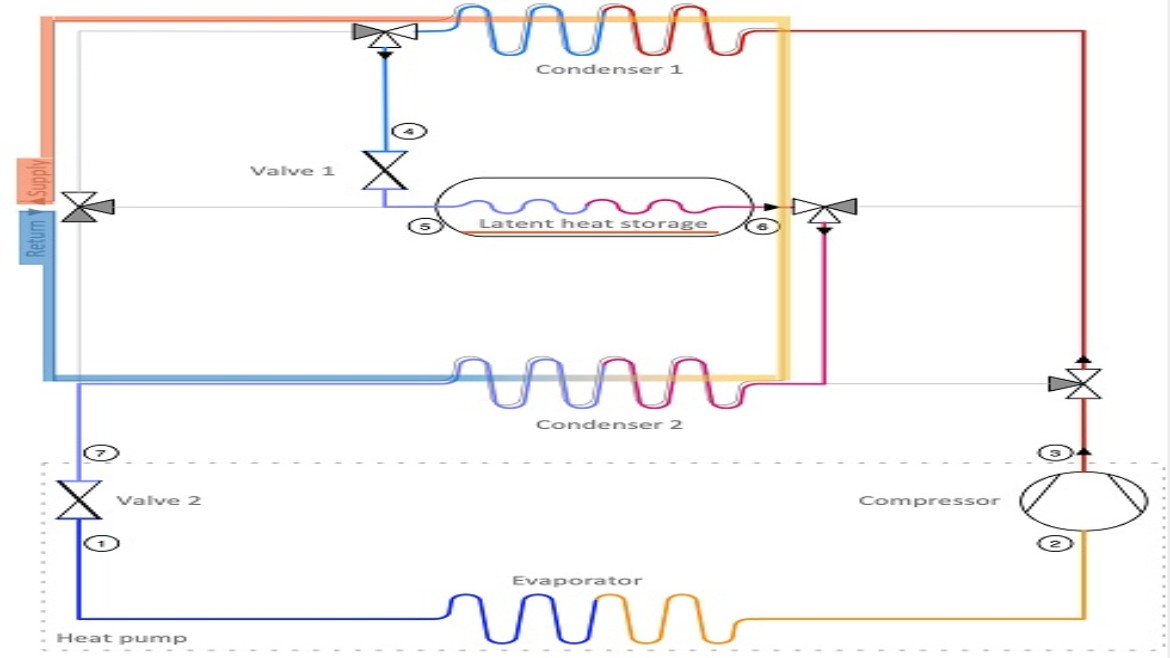SMART-CASE
SMART-CASE-NZEB
Flexible heat pumps with integrated latent heat storage
Prof. Dr. Christian Schweigler
Energy and Building Services Engineering, Department 05
The project deals with questions of the coupling of electricity and heat supply of buildings. The aim is to increase flexibility in the supply and integration of electrical energy into the grid by optimising the control of building technology for heating and cooling and the use of electrical and thermal storage. In the sense of a "Wärmewende", the project aims to contribute to overcoming the currently growing restriction to power supply and to tap the potential of innovative heat engineering solutions for the success of the energy transition. The project aims, on the one hand, to reduce the load on the power supply, which is exposed to additional loads through the use of electric heat pumps, and, on the other hand, to increase the efficiency of the heat pump systems. To this end, different options for the use of latent heat storages in heat pump systems will be investigated.
In order to reduce the load on the electricity grid, the rigid coupling of heat demand and electricity consumption to run the heat pump or chiller must be eliminated. This can be done by using electrical or thermal storages. Within the project
- a) Solutions for the use of latent heat storages in heat pumps are developed and tested in order to use available electricity at low cost for heat generation and to supply this heat to the building with a time delay. The power supply from the grid to drive the heat pump/chiller is based on the supply situation, which is dominated by fluctuating feed-in from renewable sources. The useful energy provided is stored in the form of heat or cold.
- b) develop and test concepts for the use of electrical and thermal storage in cooperation with Finnish partners. For this purpose, a pilot plant will be constructed and operated at the TAMK University of Applied Sciences in Tampere in which, in addition to various heat sources, electric battery storage units and a heat pump with integrated latent heat storage unit will also be tested. The development of this heat pump with heat storage is the subject of the project described here.

For this purpose, an innovative heat supply system consisting of a heat pump and a three-part structure consisting of a latent heat accumulator and two heat exchangers on the high-pressure side of the heat pump circuit is being developed. This new system enables the heat pump process to be operated at more favorable temperature levels. Due to the integrated storage, favorable ambient temperatures can be used as a priority.
The system can also be operated as a "reversible heat pump" to supply and store cooling energy.
An essential part of the system design will therefore be concerned with integrating the components necessary for control into the heat pump circuit in terms of refrigeration technology, which are not present in a conventional heat pump circuit. Relatively constant storage temperatures during the release or absorption of heat in the latent heat storage system have a positive effect on the coefficient of performance of the heat pump. This is supported by the direct application of refrigerant to the components instead of using separate supply circuits which require additional temperature differences.
The project includes the following processing steps:
- Potential determination in the residential building sector
- Thermodynamic modelling and design of the heat pump circuit
- Construction of a laboratory pilot plant
- Execution of test series in the laboratory
- Integration of the system into a building
- Measurements in continuous operation

Running duration:
01.10.2018 - 30.09.2021, extended until 31.12.2022
Funded by:
Federal Ministry for Economic Affairs and Climate Action
Project executing organisation:
Project Management Jülich
Project Partner:
CABERO Wärmetauscher GmbH & Co. KG, Grafrath
Alliance Partner:
Tampere University of Applied Sciences, Finnland